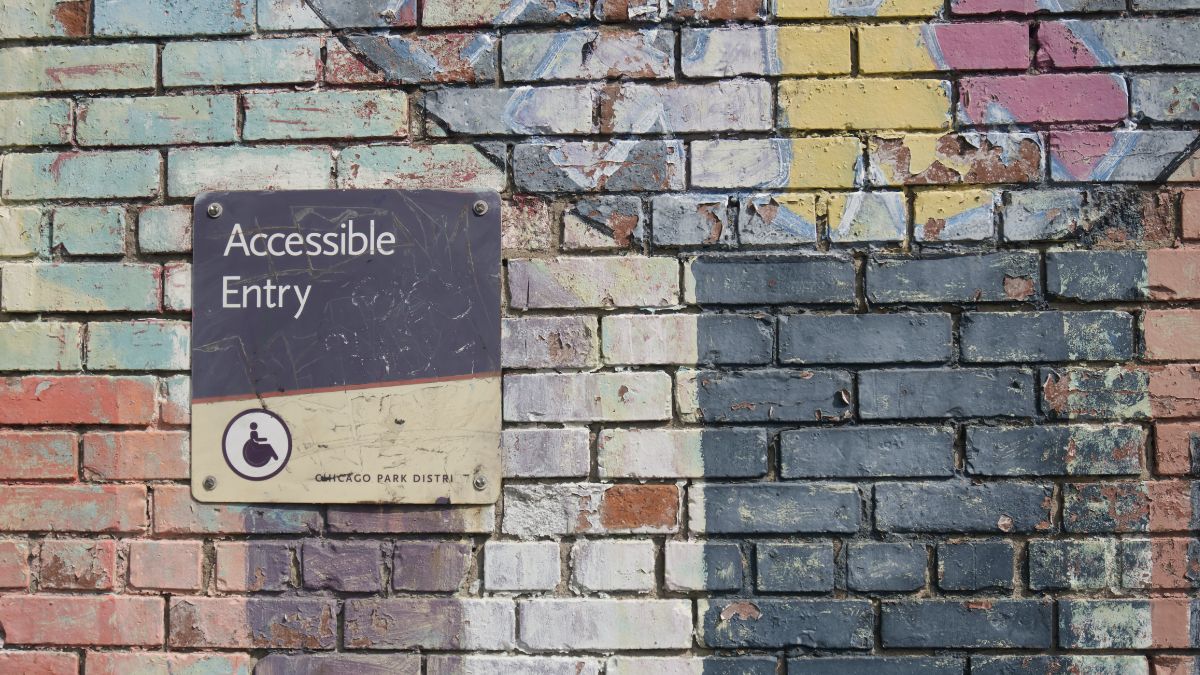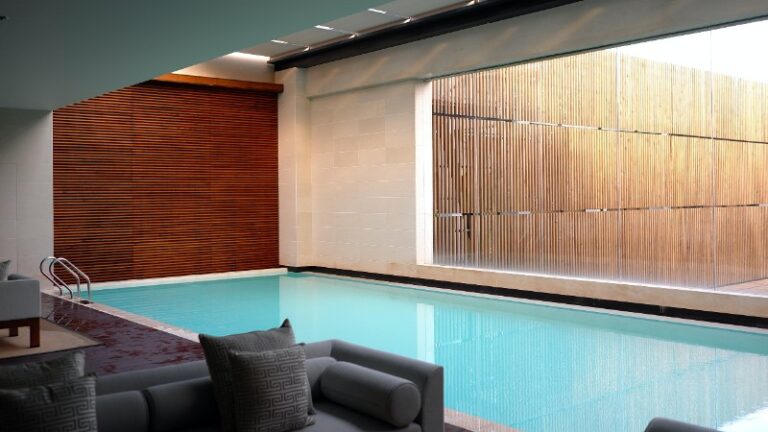Why Are Accessible Hotel Rooms Cheaper? Analyzing the Factors Behind the Pricing Disparity

As participants in Amazon Associates and other programs, we earn from qualifying purchases. This comes at no additional cost to you. For more details, see our Affiliate Disclosure.
When booking a hotel room, many travelers may notice that accessible rooms are often priced lower than their non-accessible counterparts. This pricing disparity raises questions about the factors that influence the cost of accessible accommodations.
In this article, we will explore the reasons behind this phenomenon and analyze the various elements that contribute to the pricing of accessible hotel rooms.
Understanding Accessible Hotel Rooms: An Overview
Accessible hotel rooms, often termed ‘ADA (Americans with Disabilities Act) Rooms,’ are specially designed to accommodate individuals with disabilities. These rooms are tailored to ensure a comfortable stay for guests with physical impairments, and they comply with stringent regulations under the ADA.
These accommodations include features like wider doorways to accommodate wheelchairs, lower peepholes, and light switches, grab bars in the bathroom, roll-in showers, visual alert devices, and sometimes even specially designed beds.
Typically, these rooms are not restricted to guests with disabilities; any traveler can opt to book these rooms. They are a critical part of any hotel’s inventory, showcasing their commitment to inclusive hospitality, where all guests, irrespective of physical limitations, are welcomed and cared for.
But what often puzzles travelers is the discovery that these rooms, with their advanced and accommodating amenities, are frequently priced lower than standard rooms. In the following sections, we delve deeper into the factors contributing to this pricing disparity.
Pricing Practices in the Hospitality Industry
In the hospitality industry, pricing is a complex process that hinges on a wide array of variables. At a high level, the goal is to optimize revenue – to charge as much as possible when demand is high and to encourage bookings when demand is low.
This is commonly known as revenue management or yield management. Several factors are taken into account, including the room type, size, location within the hotel, the season, the day of the week, and whether or not it’s a holiday.
Hotels often set their rates based on what the competition is charging for similar rooms, a process known as competitive pricing. Sometimes, prices may be determined based on cost; the expenses incurred in providing the room and services are calculated, and a profit margin is added to arrive at the price.
Pricing may also take into account the perceived value that a room provides. This is often subjective and is tied to the potential customer’s perception of what the room is worth. It can be influenced by a variety of factors, including the reputation of the hotel, the amenities offered, and the customer’s previous experiences.
Accessible rooms, despite offering added value in terms of accessibility features, often do not command the same perceived value in the broader market as standard rooms, a factor which significantly impacts their pricing strategy.
It’s important to understand that this doesn’t necessarily reflect the actual value of these rooms but rather a disconnect in perception, especially among guests who don’t require the specialized features of accessible rooms. This, along with other factors, contributes to the unique pricing model for accessible hotel rooms, which we will explore in the following sections.
The Supply-Demand Dynamic of Accessible Rooms
One of the key factors influencing the pricing of accessible hotel rooms is the basic economic principle of supply and demand. In most regions, legislation mandates that hotels must provide a certain number of accessible rooms, hence creating a steady supply. However, the demand for these rooms does not always match the supply, primarily because the majority of hotel guests do not require the specific features that accessible rooms provide.
According to the World Health Organization, about 16% of the global population live with some form of disability. However, not all of these individuals travel frequently, and when they do, they might not always choose to stay in hotels. Additionally, even among those who do use hotels, not all prefer to use accessible rooms, either due to lack of awareness or personal preference. Thus, the pool of guests who actively seek out accessible rooms is relatively small.
When demand is lower than supply, as it often is for accessible rooms, prices typically decrease. This is a tactic used by hotels to increase occupancy rates, ensuring rooms do not remain vacant. Lowering the price of accessible rooms can make them more appealing to budget-conscious travelers who do not necessarily require the accessible features. Consequently, this supply-demand dynamic plays a significant role in driving down the price of accessible hotel rooms.
The Influence of Legislation on Accessible Room Pricing
Legislation is another major factor that influences the pricing of accessible rooms. In many regions, including the United States, laws such as the Americans with Disabilities Act (ADA) stipulate that hotels must provide a certain number of accessible rooms proportional to the total number of rooms they have.
These laws are designed to ensure that individuals with disabilities have access to accommodations just like any other guest, embodying a spirit of inclusivity and fairness.
While these regulations ensure availability, they also indirectly impact the pricing of accessible rooms. As mentioned earlier, despite having a mandated supply of accessible rooms, hotels often face lower demand for these specific accommodations.
To avoid vacant rooms and lost potential revenue, hotels may choose to lower the prices of these rooms to attract a broader guest demographic, hence filling these rooms with guests who do not necessarily require the accessible features.
Moreover, legislation might also prevent hotels from charging more for accessible rooms, even though they may cost more to design, build, and maintain due to their specialized features. This ensures fairness and avoids financial discrimination against guests who require accessible rooms, but it also means that hotels must absorb the additional costs.
This can further complicate the pricing dynamics, sometimes leading hotels to distribute these costs across all rooms, rather than increasing the price of accessible rooms alone.
Perceived Value and Occupancy Rates: A Core Factor
The pricing of hotel rooms is not purely an exercise in cost recovery or profit-making; it is closely tied to the perceived value. Typically, the higher the perceived value of a room, the more a customer is willing to pay. This perceived value can be influenced by several factors including location, view, size, decor, and additional amenities or services.
In the case of accessible hotel rooms, despite the additional amenities and specialized features, their perceived value can often be lower for guests who do not require these accommodations. Many guests view the adjustments made for accessibility – such as grab bars in the bathroom or lower peepholes – as deviations from the ‘standard’ hotel experience, which can potentially decrease the room’s perceived value.
This perception tends to lower the price that potential guests are willing to pay for accessible rooms, thus influencing hotels to set a lower price point for these rooms.
Occupancy rate is another critical element. High occupancy rates are desirable in the hospitality industry, as vacant rooms represent lost potential revenue. As discussed earlier, the demand for accessible rooms often lags behind supply, leading to lower occupancy rates.
To counter this, hotels may lower the price of accessible rooms to make them more appealing to guests who don’t necessarily require the additional accessibility features. In this way, hotels can keep their accessible rooms occupied more consistently, contributing to the overall occupancy rate and revenue.
The Impact of Hotel Size and Chain Affiliation
Hotel size and chain affiliation also play a role in determining the pricing of accessible rooms. Larger hotels and those affiliated with well-known chains have more rooms and, by law, must offer a greater number of accessible rooms. However, they also have greater resources to absorb the cost of these rooms and can distribute the cost across a larger inventory of rooms, reducing the pricing disparity between accessible and standard rooms.
In contrast, smaller, independent hotels may face greater challenges in balancing the cost of providing accessible rooms without compromising their profitability. They have fewer rooms over which to distribute the additional cost of accessible rooms, and this can sometimes lead to a greater pricing disparity.
Furthermore, larger hotels and chain-affiliated properties often have a more diversified guest demographic, including corporate clients and large groups, which can lead to a higher occupancy rate for all types of rooms, including accessible ones. On the other hand, smaller or boutique hotels often rely heavily on individual travelers or families, who may be less likely to choose accessible rooms if they don’t require the features, hence leading to lower occupancy rates for these rooms.
Chain-affiliated hotels also have brand standards and reputations to uphold, which often include commitments to inclusivity and accessibility. Consequently, they might have more incentive to ensure high occupancy of accessible rooms, even if that means reducing their price compared to standard rooms.
Role of Online Travel Agencies (OTAs) in Pricing
Online Travel Agencies (OTAs) like Expedia, Booking.com, and TripAdvisor have revolutionized the way consumers book accommodations, offering a convenient, centralized platform for comparing and reserving hotel rooms. However, their influence extends beyond the booking process to include a notable impact on room pricing, including accessible rooms.
OTAs often work on a commission-based model, where they receive a percentage of the room rate for each booking they facilitate. This model can potentially influence room rates. For example, hotels may lower the price of accessible rooms on OTA platforms to incentivize bookings and maintain high occupancy rates, offsetting the lower room rate with the volume of bookings.
Furthermore, OTAs have helped improve the visibility and ease of booking accessible rooms. Prior to the rise of OTAs, booking an accessible room often required a direct call to the hotel, making the process more cumbersome. With OTAs, these rooms are more easily found and booked, potentially increasing demand and influencing pricing.
It’s also important to note that the increased transparency due to OTAs means potential guests can readily compare prices across different hotels, including their accessible rooms. This heightened competition can contribute to lower prices for accessible rooms as hotels strive to maintain an attractive and competitive offering.






